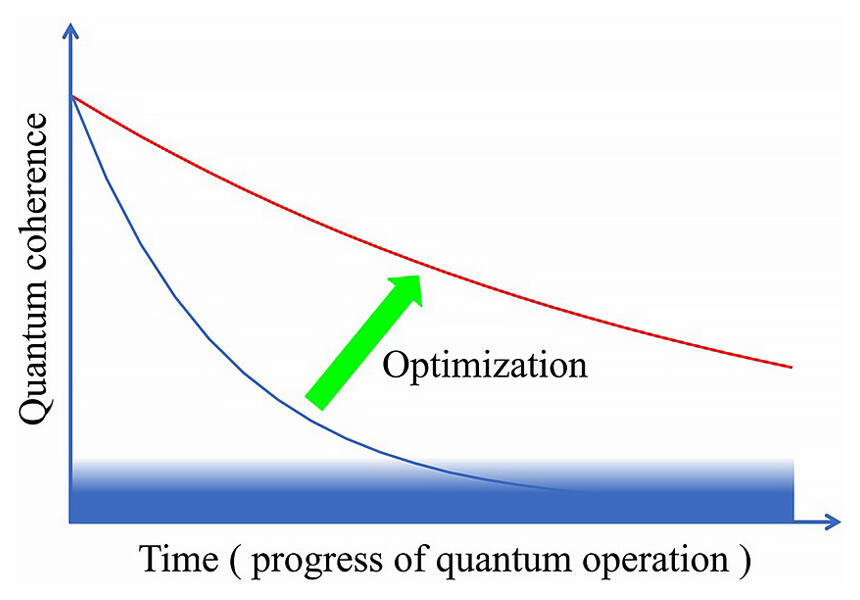On September 1, the National Institute of Information and Communications Technology (NICT), in collaboration with Keio University, Tokyo University of Science, and the University of Tokyo, announced that it has succeeded in developing a method for systematically finding optimal quantum operation sequences for a quantum computer. It hopes this method will be a valuable tool for medium-scale quantum computers, such as those with tens of qubits, will contribute to improving the performance of quantum computers, and, in the near future, will reduce their environmental impact. The findings were published in the journal Physical Review A on August 23.

Quantum computer coherence declines over time. If the coherence gets too low, the information in the quantum computer becomes meaningless. By optimizing the operation of quantum computers, more information can be processed before quantum coherence falls below the utility threshold.
Credit: National Institute of Information and Communications Technology (NICT); Keio University; Tokyo University of Science; School of Science, The University of Tokyo
A significant challenge with quantum computing is that quantum states are susceptible to noise, making it difficult to maintain stability (coherent quantum states) over long periods. To obtain the best performance from a quantum computer, operations must therefore be performed within the time frame that the coherent quantum state can be maintained.
However, quantum operation sequences, which are the instructions for these operations, involve human operators producing sequences that they believe are optimal based on existing methods (recipes). For this reason, a method for systematically identifying optimal quantum sequences has been needed.
When computers store and process information, all information is converted into a string of bits with a value of 0 or 1. Quantum arithmetic sequences are computer programs written in a language that can be understood by humans, then converted so that quantum computers can process the information. Quantum operation sequences consist of one-qubit and two-qubit operations. The optimal sequence is the one that requires the fewest number of operations and provides the highest performance.
The group's new method uses a computational algorithm called GRAPE to analyze all possible sequences of basic quantum operations. Specifically, the method creates a table for each quantum operation sequence and performance index (fidelity). It then systematically identifies the optimal quantum operation sequence based on accumulated data ranging from thousands to millions of sequences, depending on the number of qubits and the number of operations being investigated.
In addition to identifying optimal sequences, several other results were obtained using this new method. One finding was that there are many different ways to perform quantum tasks, usually with the same efficiency, even for relatively short quantum operation sequences. It is impossible to achieve this result using conventional methods that only uncover a single way to perform the desired task.
Another finding was that high efficiency might be achieved even with short quantum operation sequences deemed too short for completing the desired task using conventional methods. In terms of actual applications, the group believes that it may be ideal to use such short quantum arithmetic sequences, considering all the other noise and defects from quantum computing devices.
This article has been translated by JST with permission from The Science News Ltd.(https://sci-news.co.jp/). Unauthorized reproduction of the article and photographs is prohibited.




